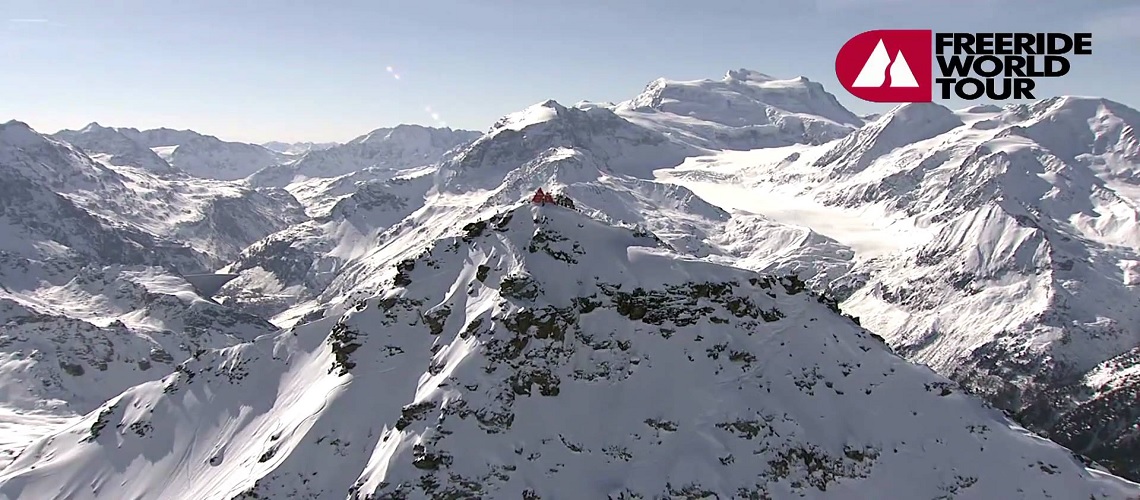
What is the Freeride World Tour (FWT)? Most winter sports fans and even people who ski or ride regularly may not know much about the sport. If you wanted to explain to someone not really into skiing or riding what the Freeride World Tour was all about, it might be a little tricky to describe to them. The FWT could be explained to them as the snow sport where extreme athletes ski or ride down huge mountains with very steep verticals, icy conditions, jump off massive cliffs, and terrain that has not been modified and has only been touched by mother nature.
Most snow sports fans are more familiar with the alpine and freestyle ski-racing events, with the FWT pushing to make its way into the mainstream over the last decade. The FWT Management SA, based out of Switzerland, has been organizing world-class events since 1996, with “Extreme Verbier” being its main event. “Extreme Verbier” takes place in the iconic Swiss Alps and allows riders to hit terrain that does not exist anywhere else. Verbier is known for its extreme terrain with huge verticals and dangerous no-fall terrain and hosts the FWT World Cup Finals, and is also home to the World Speed Skiing track.
The Freeride World Tour competes across nine countries: The United States, Switzerland, Austria, France, Italy, Russia, Canada, Andorra, and Japan. This is one of the features that make the FWT so special to the fans, but it is also just as crucial to the athletes who get the opportunity to compete worldwide. The challenging terrain that competitors must face is some of the hardest on the planet. There is no course to follow like in alpine racing. FWT competitions require riders or skiers to drop in and find their course and line to follow.
Unlike alpine racing, where your finish time decides who wins and who does not, the judges ultimately determine the overall winner on the FWT. There are five criteria that judges look at when evaluating a rider as they traverse down the mountain on the Freeride World Tour. Those five criteria are the difficulty of the line, control, fluidity, jumps, and technique. Judges use a point system from 0-100, and riders must stay in sight of the judges while making their way down the mountain. Any part of the riders’ run where the judges cannot see them cannot be used for scoring, making it vital for riders to be aware of this and choose the correct line while traversing the mountain.
There are two regions in the FWT, Region 1, which includes Europe, Asia, and Oceania, and Region 2, which includes the Americas. Nine athletes from Region 2 (USA, Canada, Chile, and Argentina) qualified to compete in next year’s Freeride World Tour.

I had the opportunity to chat with some of them about their accomplishment and challenges throughout the process and also discuss with them what it was like to get their chance to compete on the big stage next season. Taylor Dobyns, 24, from Denver, CO, first started racing in Killington, VT, in her youth before moving to Colorado in 2017. While living in Vermont, Dobyns competed in alpine racing in the technical and speed events before moving to Colorado. I asked her how competing in freeride skiing was different from competing in alpine racing events, and she said, “It’s a different culture; the people are great, laid back, and very supportive” and “It (FWT) is a lot more fun.”
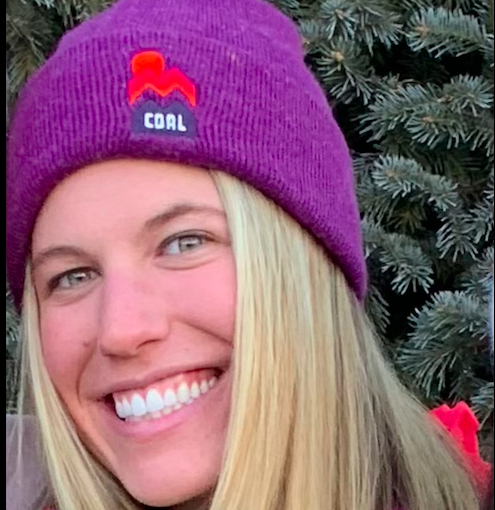
Training for the FWT and going to law school simultaneously must be very challenging for anyone, and Dobyns said, “I had little time to train,” and she was “skiing against others who were better than her” at first. Dobyns said, “I never did juniors, and I was never coached,” which made it difficult for her to pick the right line and inspect the mountain before a competition. She moved to Colorado to study law at the University of Denver and is scheduled to graduate this year and take the bar this summer.
When asked what was one of the hardest parts of competing on the FWT, she said, “finding the best scoring line, finding landmarks, making decisions, and not hesitating.” Being decisive and not hesitating is something that FWT judges look at very closely. When chatting with Dobyns and the other FWT athletes, it became apparent that they were acutely aware of this.
Competing on the FWT can be difficult with traveling to all the different venues throughout the tour, and it is essential to have a strong supporting cast for these athletes as they go through the season. Dobyns said, “My parents and my sister, Tori, have been my biggest supporters along the way.” Dobyns also said when asked if there were anything she would like to add at the end of the interview, “I’d like to thank my parents and sister who have been with me throughout this whole process.”
Brian Stenerson, 35, is the “Journeyman” on the Freeride World Tour and has overcome multiple injuries competing on tour over the last nine seasons to make it to the big show finally. Stenerson’s roots began in the terrain park, but big mountain free riding has expanded his riding to a different level which he feels is more true to his personal style. Stenerson said, “I’m grateful for all of the time I’ve spent on a board” and “Every discipline I’ve been involved in has helped to shape my riding to what it is today.” The terrain park is not Stenerson’s main discipline, but he did say, “I still love to dabble in it from time to time to help me to continue to progress in my riding.”
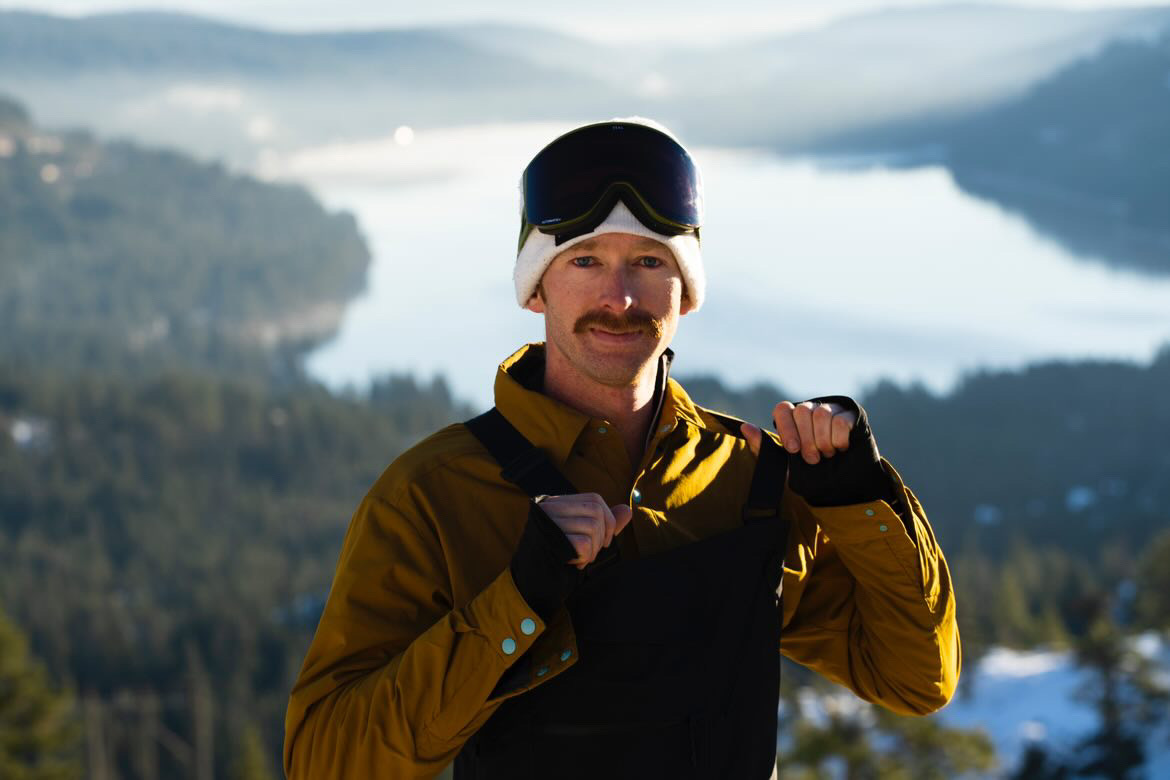
Stenerson, who lives in South Lake Tahoe, said, “It’s so difficult and competitive to make it on to the FWT,” and “I have so much respect for the other athletes who made it.” I asked Stenerson if it was difficult being a snowboarder and hitting the challenging terrain that the FWT requires athletes to compete on. He responded, “Hitting mogul fields on snowboards builds confidence, and part of the reality is icy moguls is good training to ride choppers.”
I asked Stenerson what advice he would give kids or the future generation of freeriders looking to compete in this extreme sport. Stenerson responded, “Have as much fun as possible, stay healthy, go to pre-season training, and make sure you love what you do.”
Stenerson said he likes going first in competitions, so he can watch everyone else compete and cheer them on as they finish. When asked what his goal or what you want to accomplish in competing on the FWT, Stenerson responded, “Just being around everyone, meeting new people on the international stage, and putting down good runs and having the opportunity to showcase my style.”
The youngest member of next year’s FWT team is Lydia Nelsen, who turned 19 a few days after the final competition. Nelsen, originally from the small town of Sandpoint, Idaho, said she used to ski for fun, and some of her friends who competed in the juniors inspired her and got her interested in the FWT. She now lives in Salt Lake City, UT, and said she enjoyed skiing more in Utah than in Idaho due to the low number of other female skiers in her hometown. She said she mostly skied with male skiers while living in Idaho, and Utah has many more girls to ski with, which was nice.
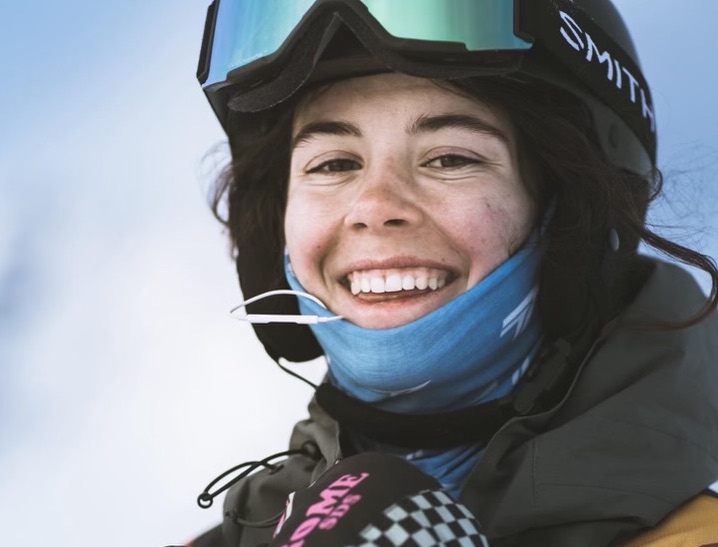
Competing on the FWT at 18 must have been very difficult, and I asked Nelsen what the most challenging part was for her, and she said, “nerves.“ She said, “The start gate…you must calm your mind and think about skiing normally.” She also said, “The vibes in the start gate…everyone is cheering for everyone.” Being surrounded by other female athletes was important because she had none in Idaho. Later in the interview, Nelsen brought up the start gate again and said, “I have to focus on the mountains and breathing, enjoy it and have fun skiing the line.”
When asked who has been her biggest supporter (s), Nelsen responded, “My dad. He was my coach and traveled with me.” She added, “My boyfriend, who also competes on the tour,” and “Sponsorships from Sandpoint, ID, donated money to help with the costs of competing.” She also added the Alpine Shop in her hometown of Sandpoint, Idaho, was helpful, where “Joe” helped her get in touch with a rep from Dynastar for a sponsorship.
What goals does Nelsen have moving forward, and what does she want to accomplish in competing in the FWT next season? She said, “Focus on staying present in the moment, seeing new places, meeting new people, and to re-qualify for the FWT next year.”
I asked her what her favorite moment (s) on the Freeride World Tour so far was, and Nelsen responded with her trip to Kicking Horse Resort in Canada. Nelsen said she went with some of her friends who also competed on the tour, and they drove up together to Canada, and on their way back, they stopped at a hot spring in British Colombia. Nelsen said she had never been to a hot spring before and that it was cool, and “Freeride is all about meeting cool people and quality friends.”
Another athlete I had the opportunity to chat with about having the chance to compete on the FWT next season was skier Kendall Goodman. Goodman, 22, originally from Anchorage, Alaska, grew up racing and competed in all the alpine events. “I wasn’t a fan. I didn’t like all the groomers and drills. POW is so much better!” said Goodman. He moved to Salt Lake City, UT, when he was 13 years old, where he first started freeride skiing. “You have unlimited options to think about, and it’s more of a game,” and “it’s more fun, and you have more freedom than alpine racing,” Goodman said.

When asked what the most challenging part of preparing for the competitions was, Goodman said, “The mental aspect of the FWT.” Goodman added, “The difficulties of traveling, the time required, you only have one run to make it.” When asked what happens when you make a mistake, Goodman said, “You have to try and move on to the next one, and when it goes your way, it’s pretty cool mentally.”
I asked Goodman if the FWT had changed his life, and he said, “In a big way,” and continued by saying, “The coolest part about the sport is friendships.” He added, “We travel with friends all over the world, and we are competitive and want to win, but we also all are still good friends.”
Another question I asked Goodman was, what advice would you give kids out there looking to get into this sport and compete in the FWT? Goodman replied, “Ski the way you want to ski, don’t waste time trying to emulate someone else…the judges will see that” and “Ski your best and work on that, and it will work out.”
Jackson Bathgate, 24, from Whistler, British Colombia, has been competing on the circuit since he was only 12. He competed in the FWT juniors and won the Freeride Junior World Championships in Andorra in 2016. Bathgate is known throughout the tour for being a skier that goes all out and has a ” playful ” style while still sending it full tilt no matter the ski conditions.
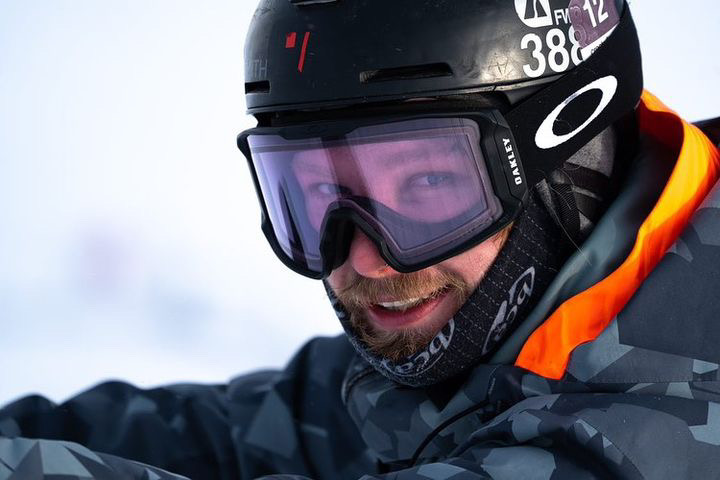
Bathgate did have some background in alpine skiing when he was younger but said he preferred freeride skiing more because, according to him, “Any guy can win, compared to alpine (racing).” Bathgate is known for his high energy and taking lines and chances that other riders might not take. When asked what was the most challenging part for him on the tour, he responded, “Picking the line…and can you do it the first time?”
Bathgate was short and to the point with most of his answers to my questions throughout the interview, which emulates his skiing style of taking on the course full throttle and not looking back. It might have also been that when I spoke with Bathgate, he called me on his break from work while sitting in his tow truck. Bathgate has been working at Coopers Towing in Whistler for three years while simultaneously competing on the tour. Bathgate said, “My boss has been rootin’ for me all year and thought it was killer that I was still trying to hold a full-time job while ripping the comp (competition) circuit!” This was the longest answer I got from him during the interview.
Working a full-time job while competing on the FWT is a difficult task and has affected Bathgate. When asked how he trains or prepares for the FWT, Bathgate responded, “I don’t train. I just work and ski at competitions.” I also asked him if the FWT had changed his life, and he responded, “Not yet. I just work.”
It is obvious that trying to get answers out of Bathgate is not easy, but I did manage to get him to answer some questions:
Favorite mountain: “Kicking Horse, Huge variety of terrain, long runs, verticals, turns.”
Dream Mountain to Ski: “Mt. Baker, A lot of snow.”
Hardest/Scariest Mountains to Ski: “European Mountains, get in trouble, cause an avalanche, you’re responsible.”
Favorite moment of the tour so far: “Winning Whistler Cup.”
Biggest supporter (s) throughout the tour: “Bro and girlfriend.”
Jackson Bathgate was the quickest interview of all the qualifiers I could chat with.
Note: Video Contains Adult Language
There were some common answers and themes amongst the group of athletes that I talked to, which I found refreshing and also surprising. Every person I interviewed mentioned how the group of skiers/riders that competed on the FWT were also all friends. They all supported each other even though they were competing against each other. They all talked about traveling the world with each other, meeting new friends along the way, and having fun and laughing together. “Fun” was the common denominator throughout my interviews with this group, and everyone stressed how important it was to have fun while you’re out there and enjoy it. The FWT might have to look out for the new members of Region 2, not only for their skills and abilities but also because there is no doubt that they will have a lot of fun doing it along the way.